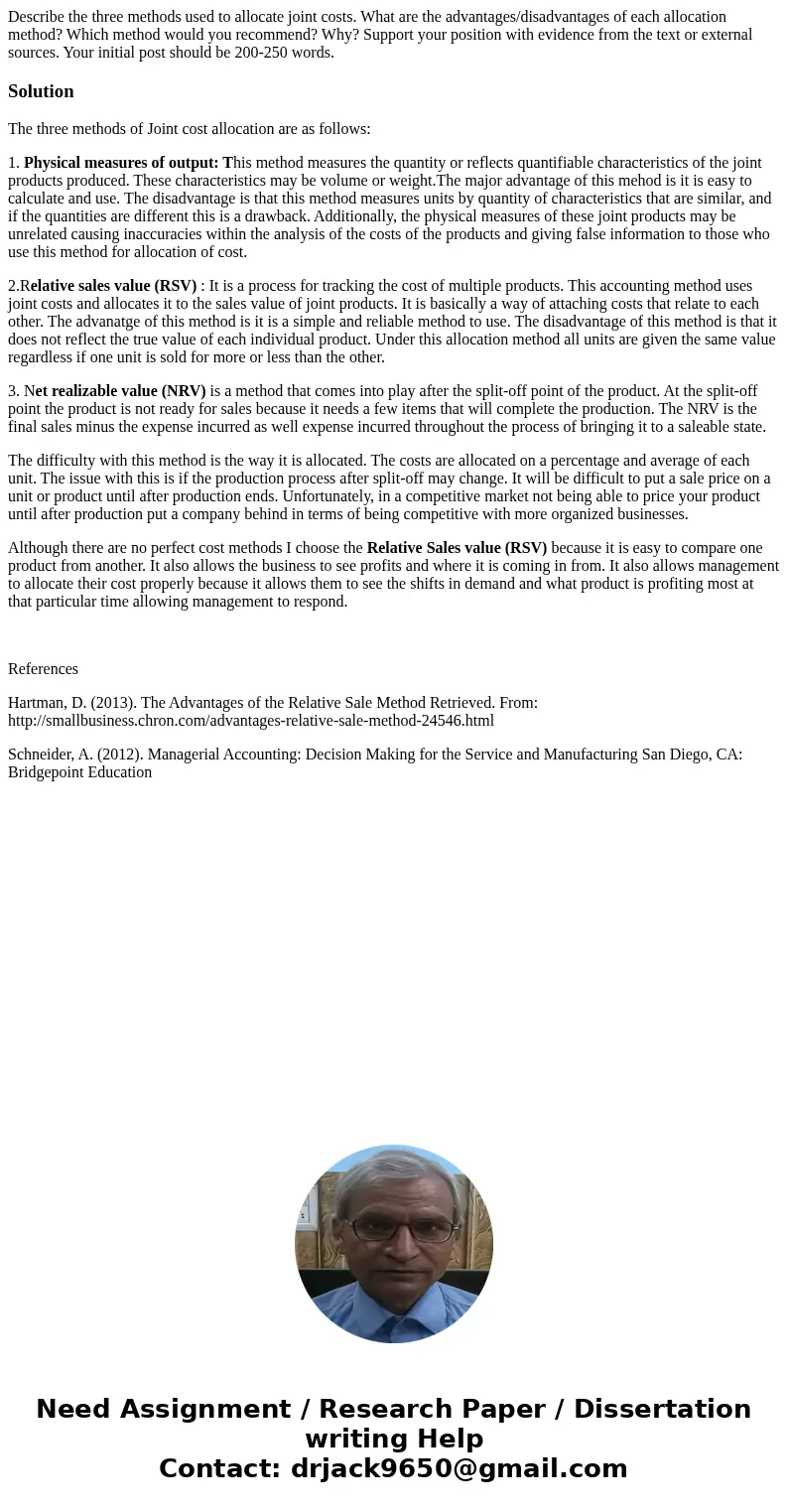Describe the three methods used to allocate joint costs What
Describe the three methods used to allocate joint costs. What are the advantages/disadvantages of each allocation method? Which method would you recommend? Why? Support your position with evidence from the text or external sources. Your initial post should be 200-250 words.
Solution
The three methods of Joint cost allocation are as follows:
1. Physical measures of output: This method measures the quantity or reflects quantifiable characteristics of the joint products produced. These characteristics may be volume or weight.The major advantage of this mehod is it is easy to calculate and use. The disadvantage is that this method measures units by quantity of characteristics that are similar, and if the quantities are different this is a drawback. Additionally, the physical measures of these joint products may be unrelated causing inaccuracies within the analysis of the costs of the products and giving false information to those who use this method for allocation of cost.
2.Relative sales value (RSV) : It is a process for tracking the cost of multiple products. This accounting method uses joint costs and allocates it to the sales value of joint products. It is basically a way of attaching costs that relate to each other. The advanatge of this method is it is a simple and reliable method to use. The disadvantage of this method is that it does not reflect the true value of each individual product. Under this allocation method all units are given the same value regardless if one unit is sold for more or less than the other.
3. Net realizable value (NRV) is a method that comes into play after the split-off point of the product. At the split-off point the product is not ready for sales because it needs a few items that will complete the production. The NRV is the final sales minus the expense incurred as well expense incurred throughout the process of bringing it to a saleable state.
The difficulty with this method is the way it is allocated. The costs are allocated on a percentage and average of each unit. The issue with this is if the production process after split-off may change. It will be difficult to put a sale price on a unit or product until after production ends. Unfortunately, in a competitive market not being able to price your product until after production put a company behind in terms of being competitive with more organized businesses.
Although there are no perfect cost methods I choose the Relative Sales value (RSV) because it is easy to compare one product from another. It also allows the business to see profits and where it is coming in from. It also allows management to allocate their cost properly because it allows them to see the shifts in demand and what product is profiting most at that particular time allowing management to respond.
References
Hartman, D. (2013). The Advantages of the Relative Sale Method Retrieved. From: http://smallbusiness.chron.com/advantages-relative-sale-method-24546.html
Schneider, A. (2012). Managerial Accounting: Decision Making for the Service and Manufacturing San Diego, CA: Bridgepoint Education

 Homework Sourse
Homework Sourse